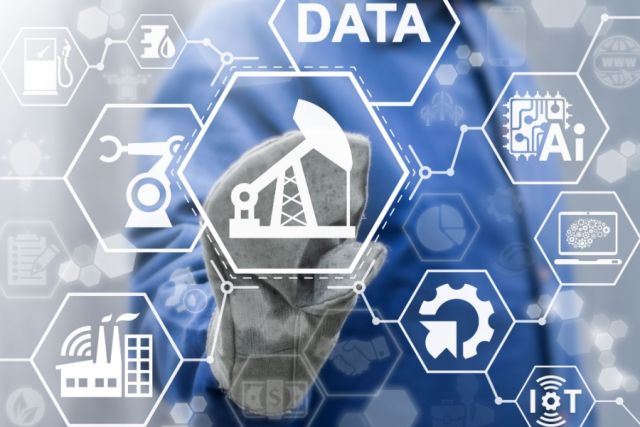
Artificial intelligence and the digitization of the oilfield have allowed for several improvements in keeping operators out of harm’s way, panelists said during the 2024 Offshore Technology Conference.
In years past, the oil and gas industry had a reputation for dangerous yet fulfilling work. While the jobs remain fulfilling for many, companies within the industry are trying to ditch the danger. Panelists at the 2024 Offshore Technology Conference’s “Digitization & Improved Safety in Oil and Gas” session said great strides have been made in safety. The main catalyst for improving operational safety has been advances made through digitization, digital technologies and automation.
“There’s a lot of analytics that have been enhanced by AI [artificial intelligence] that are now mature for application,” Bruno Avena, CEO of Brazil’s Altave told the audience during the panel. “Occupational safety was the first one the market pushed for, but now we have examples of higher risk applications, like tension cables, red zone management and PPE [personal protective equipment] compliance.”
Beyond occupational safety, digitization has led to predictive maintenance and helped improve detection of corrosion, fire, oil spills, water vapor leaks as well as enabling latch monitoring and collision avoidance, Avena continued.
Digitization also lowers the specialized expertise needed to operate such systems, thereby empowering rig staff to efficiently manage tasks on location.
“Automation, in general, will significantly simplify and redefine the work that you have to do at the wellsite,” said Hani Elshahawi, managing director of NoviDigiTech. “I could argue that a lot of the directional drilling tasks should be done remotely… there’s a lot of workflow automation that could be done so that we take a lot of the cognitive load from people even working remotely, so that they can concentrate on the most highest value added tasks.”
One example of reducing the “cognitive load” that Elshahawi refers to is the reduction of reporting. When a safety violation or other mishap occurs, traditionally workers would have to report the problem themselves. An automated reporting process sends digital data streams that further optimize operations, reducing the manual workload and allowing personnel to focus on essential tasks.
“We are now using digital streams of data to automate a lot of the reporting that was historically keyed in manually by worksite staff,” Mark Freeman, CEO of ProDirectional said. “By removing a lot of the requirements of manually creating reports and sending those reports out, we’re left with literally just performing the function of directional drilling.”
This change was such a needed change within the industry, because as Freeman puts it, “if a leader is not terrified of a significant injury to an employee, then they shouldn’t be in leadership.”
Despite the many advances made and the consistent effort by leadership to improve oilfield safety, challenges persist in maximizing the potential of digitalization, Pedro Guizardi, CEO of Dersalis, pointed out during the panel. Efficient data transfer — particularly in offshore and underground mining operations — remains a significant hurdle.
Guizardi emphasized the need for improvements in wireless communication to enable real-time data transmission, thereby empowering management to make informed decisions promptly based on operational conditions.
“We are collecting data, we are able to interact with users, but sometimes we are not able to take the information to the management so they can help or make decisions based on this information,” he said. “We have a lot to improve [on] when we are talking about wireless communication for example. So we can really deal with real-time conditions.”
While the implementation of digitization is sure to have some growing pains, it signals a change is coming within the energy industry. There is more accountability in terms of safety.
“Accountability has changed over the course of the last two decades. When I first started in the industry 25 years ago the thought around safety was… to just make sure we don’t get in trouble,” Freeman said. “The way it’s shifted in today’s industry is that we all feel accountable for not only our own safety but for those around. We have shifted from a culture of compliance to a culture of care.”
Recommended Reading
Diamondback Energy Appoints Industry Veteran Holderness to Board
2025-02-04 - Diamondback Energy has named Darin G. Holderness, who founded and served as CFO at P&A Exchange LLC and CFO at ProPetro Holding Corp. as a board of directors at the Permian Basin E&P.
Pearl Energy Investments Closes Fund IV with $999.9MM
2025-02-04 - Pearl Energy Investments’ Fund IV met its hard cap within four months of launching and closed on Jan. 31.
Phillips 66’s NGL Focus, Midstream Acquisitions Pay Off in 2024
2025-02-04 - Phillips 66 reported record volumes for 2024 as it advances a wellhead-to-market strategy within its midstream business.
Confirmed: Liberty Energy’s Chris Wright is 17th US Energy Secretary
2025-02-03 - Liberty Energy Founder Chris Wright, who was confirmed with bipartisan support on Feb. 3, aims to accelerate all forms of energy sources out of regulatory gridlock.
Comments
Add new comment
This conversation is moderated according to Hart Energy community rules. Please read the rules before joining the discussion. If you’re experiencing any technical problems, please contact our customer care team.




